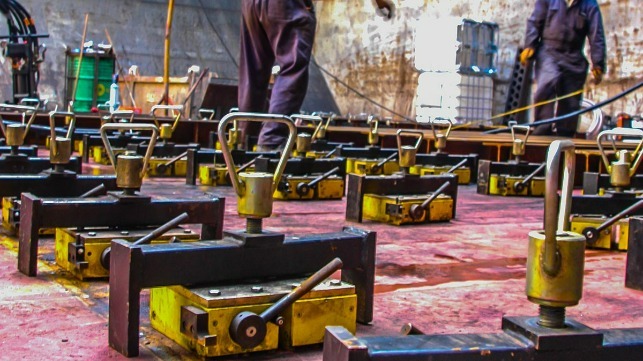SPS Technology Overhauls Repair Techniques to Combat Steel Price Hikes

[By: Jonny Lim, Director SPS Technology]
As steel prices remain elevated and supply chain disruptions delay price declines, a new proven structural ship repair technique could help owners keep costs down and assets on the water. Jonny Lim, Director at SPS Technology, reports.
The extreme price of steel has been widely discussed in the shipping industry press this year. As many headed for their summer vacations, The Maritime Executive carried an online story titled ‘Surging Steel Prices Hurt Shipbuilders While Driving-Up Scrap Values’, which outlined the impact of price rises across the industry.
With Q4 2021 approaching, steel costs have started to level off, although localised pricing can vary greatly because of many factors including scale and availability. Furthermore, production capacity forced to take a hiatus during COVID-19 lockdowns is continuing to play catch-up. This means steel markets and the additional costs buyers are currently paying are unlikely to normalise overnight.
Steel costs push repair prices up
Much of the commentary surrounding the steel price hike has focused on the impact of ship construction and scrappage. For the latter, owners have been considering the benefits of keeping aging vessels in service to take advantage of high charter rates, versus scrapping to capitalise on attractive prices.
Less attention has been paid to the impact of price rises on structural steel repairs. Class requirements dictate that ships must remain fit for their intended service. Repairs to corrosion on bottom plates, decks, tank tops, bulkheads and other areas are essential to the safe, ongoing operation of all ships. As a result, owners who need steel to repair their ships may not be able to postpone, or “wait and see” if and how steel prices level out later in the year.
What they can do is seek new ways to offset rising costs while keeping work schedules on track, or preferably reducing them to reap the rewards of current charter rates.
One option is to replace traditional crop and renewal methods with proven alternatives such as structural composites, including SPS (Sandwich Plate System): a permanent, class approved solution that comprises two metal plates bonded with a solid elastomer core.
A worked example
Steel replacement is required when part of the vessel structure has corroded below the allowable remaining thickness of 70% to 85% of the original as built values (15%-30% diminution). If taking a traditional approach, the affected area is cropped and renewed using steel that’s the same grade and dimensions as the original. The work requires the corroded steel to be cut out, along with dismantling and removing any services, insulation, piping, etc. Excess materials must then be removed from the vessel, collected, and transported to recycling plants or just scrapped – all at additional financial and environmental cost.
Comparatively, structural composites allow for the reuse of a ship’s existing steel plating, with minimal risk of corrosion during the lifecycle of the vessel. This is possible by using the existing steel as one side of a new composite sandwich panel comprising an elastomer core and new top face plate.
As a result, the amount of new steel required is up to 60% less, in comparison to crop and renewal. Insulation, electrical and piped service runs also remain intact, while scrap from the repair process is eliminated. The approach also cuts project durations and can be completed while a vessel is in operation. This is beneficial for ship owners looking to maximise charter days at current high rates.
A back-of-the-envelope calculation demonstrates the scale of the time savings possible, with a bulk carrier tank top repair project timeline cut by 40% or more, with associated cost savings, by using a structural composite as opposed to crop and renewal.
A permanent change
The pandemic has caused ship owners to re-evaluate many aspects of their operations and highlighted fundamental areas within the shipping industry where change is required. Structural composites represent a fresh yet established approach to ship repair, which will remain highly effective and economical now and in the future – even when steel prices drop.
The products and services herein described in this press release are not endorsed by The Maritime Executive.
